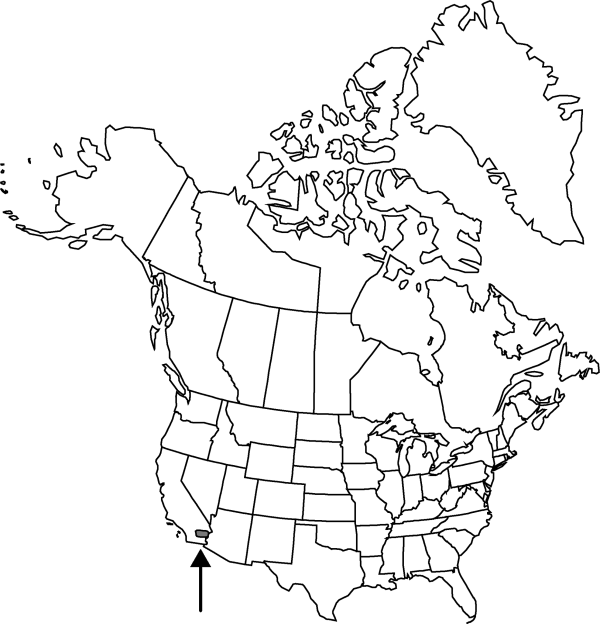Coryphantha alversonii
Cactography 1926(1): 3. 1926.
Plants unbranched (rarely to 30 branches), usually much more than 1/2 protruding above ground level, stiff and usually erect (rarely sprawling and basal parts becoming buried and mistaken for rhizomes), densely and uniformly clothed by spines. Roots diffuse or short taproots also present, largest roots basally less than 1/5 of stem diam. Stems cylindric, 5–27+ × 4.5–9 cm; tubercles 10–14 × 6–10 mm, stiff; areolar glands absent; parenchyma not mucilaginous; druses in pith and cortex relatively sparse, some giant, to 1 mm, lenticular; pith 1/5–1/4 of lesser stem diam.; medullary vascular system present (its vascular-bundles numerous, small, and close together) or, in young plants, absent. Spines 30–51 per areole, heavily or lightly pigmented, tan to purplish gray or white proximally, black or sepia distally, darkest when fresh, weathering to blackish, radial spines slightly contrasting with centrals, dull creamy white, dark tips present, usually purplish black; radial spines 18–33 per areole, 12–18 × 0.15–0.45 mm; subcentral spines 1–3 often present; outer central spines 6–15 per areole, always radiating in adults protruding at all angles; inner central spines 0–10 per areole (3–7 per areole on subadult plants), all porrect or nearly so, straight, largest spines 10–23 × 0.5–0.9 mm. Flowers nearly apical, 20–30 × 25–39 mm; outer tepals densely fringed; inner tepals 21 (–42) per flower, widely spreading, pale to intense rose-pink or rose-violet, with paler margins (white or pale rose), darker midstripes conspicuous, proximally white, 14–23 × 2–4 mm; outer filaments white, pale rose, or pink with white bases, not greatly contrasting with inner tepals; anthers bright dark yellow; stigma lobes 5–9, widely spreading, pure white (rarely pale violet), 3–4 mm. Fruits pale green throughout, narrowly fusiform-cylindric to narrowly obovoid, 16–25 × 6–12 mm, succulent; floral remnant persistent Seeds reddish-brown, obovoid to slightly comma-shaped, 1.3–1.6 mm, pitted.
Phenology: Flowering May–Jun; fruiting Jun–Jul.
Habitat: Desert pavement or among stones, sandy or gravelly soils, alluvial fans, coarse alluvial deposits containing granite, gneiss, schist, and quartzite
Elevation: 70-600(-1200?) m
Distribution

Calif.
Discussion
Of conservation concern.
Coryphantha alversonii is an allospecies in the C. vivipara species-group. Unlike other species in the subgenus Escobaria which have one layer, C. alversonii has two layers of hypodermis, probably reflecting its unusually xeric habitat. Coryphantha alversonii populations are localized, despite large areas of undisturbed desert at the proper altitude. Its disjunct distribution from the rest of the Coryphantha species, and its restriction to the relatively lush vegetation on alluvial fans in some areas, suggest a relictual taxon limited by drought, although this is the most strongly xerophytic species of Coryphantha.
The flowers, fruits, and seeds of Coryphantha alversonii are surprisingly small for such an otherwise robust species. The distinctive spine clusters of this species are strongly reminiscent of the Chihuahuan Desert species C. sneedii, only larger; the fruits and seeds of C. alversonii are intermediate in size and shape between those of C. sneedii and C. vivipara.
Although Coryphantha alversonii is expected on the Arizona side of the lower Colorado River, close to some of its known California populations, it remains undocumented from Arizona. Persistent reports of C. alversonii for Arizona (L. D. Benson 1969, 1982) are based on a misidentified fragment of either C. vivipara var. rosea or C. chlorantha, depending on its original tepal color.
Selected References
None.